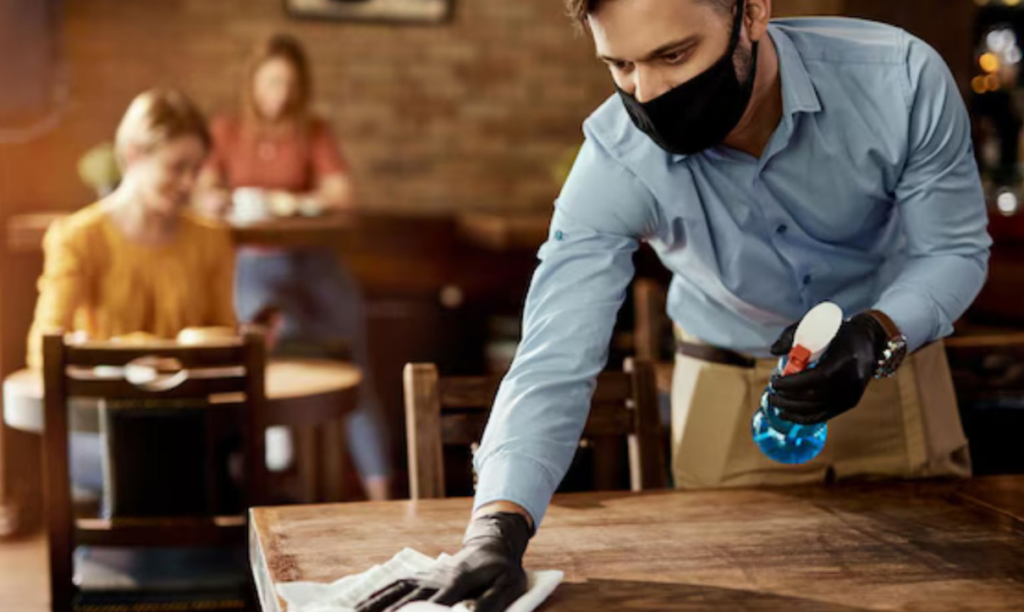
Restaurant Cleaning Services are essential for maintaining a clean, safe, and inviting environment for both customers and staff. A clean restaurant not only enhances the dining experience but also ensures compliance with health and safety regulations. Professional restaurant cleaning services can help maintain the highest standards of cleanliness in both front-of-house and back-of-house areas.
Key Areas of Restaurant Cleaning:
1. Kitchen Cleaning:
- Deep Cleaning of Cooking Equipment: Includes cleaning ovens, grills, fryers, stovetops, and exhaust systems. Regular deep cleaning helps prevent grease buildup and ensures efficient cooking.
- Hood and Vent Cleaning: Kitchen hoods, vents, and exhaust fans are prone to grease and oil buildup, which can be a fire hazard. Professional cleaning helps keep these areas safe and functional.
- Floor Cleaning: High-pressure cleaning for kitchen floors removes grease, spills, and food debris. Non-slip surfaces are essential for safety in a kitchen.
- Sanitizing Surfaces: All food prep surfaces, including countertops, sinks, and cutting boards, need thorough sanitization to prevent cross-contamination.
2. Dining Area Cleaning:
- Tables and Chairs: Wiping down all tables and chairs after each service ensures that they’re hygienic and ready for the next customer.
- Floors: Sweeping and mopping floors in dining areas, ensuring that they remain free of crumbs, spills, and stains.
- Restroom Cleaning: Restrooms should be cleaned frequently throughout the day. This includes sanitizing toilets, sinks, mirrors, and replenishing paper towels and soap dispensers.
- High-Touch Surfaces: Cleaning of door handles, light switches, menus, and other frequently touched areas to reduce the spread of germs.
3. Bar Area Cleaning:
- Bar Equipment: Cleaning and sanitizing blenders, refrigerators, and other equipment used for drink preparation.
- Surfaces: Bar tops, stools, and shelves should be wiped down regularly.
- Glassware: Ensuring all glasses and cups are cleaned, sanitized, and free from streaks or residue.
4. Storage Areas:
- Pantries and Walk-In Refrigerators: Regular cleaning of storage areas is necessary to prevent the growth of mold or pests and to ensure food is stored in a clean, safe environment.
- Shelves and Cabinets: Cleaning storage areas to avoid contamination of food items and to keep everything organized.
5. Outdoor Areas (If Applicable):
- Patio or Dining Areas: Pressure washing and cleaning outdoor seating areas, including tables, chairs, and floors, to ensure they are presentable.
- Trash Areas: Keeping trash bins clean and sanitized, especially in areas where waste can accumulate, is essential for maintaining hygiene and a professional image.
